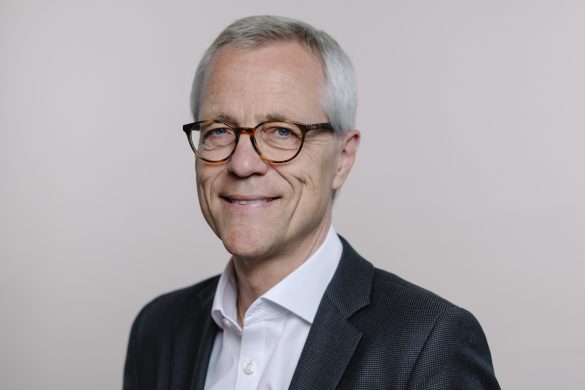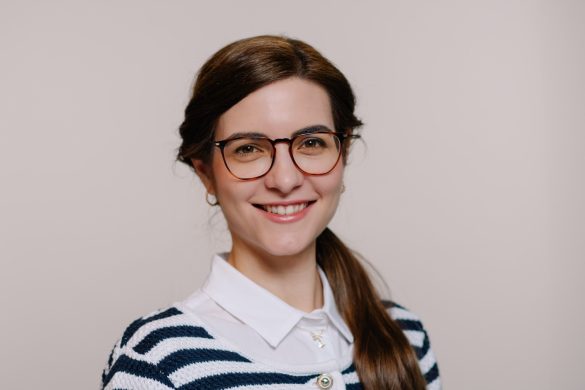Albania, officially the Republic of Albania (in Albanian: Republika e Shqipërisë), is situated in South-East Europe on the West of the Balkan peninsula. It is bordered with Montenegro to the northwest, Kosovo to the northeast, the Republic of Macedonia to the east and Greece to the south and southeast. Albania has a long coastline facing the Adriatic Sea on the west and the Ionian Sea on the south and southwest. The Strait of Otranto, a 72 km long strait between the Adriatic and Ionian Sea, lies between Albania and the Puglia region in Italy. The territory of Albania is 28.478 km2 in area, of which less than 4% is water. Albanian are ethnically descended from Illyrians and some of the main cities, such as Durrës, Berat, have around 3 millennia of history.
Albania has a mountainous geography. About three-fourths of its territory consists of mountains and hills with elevations of more than 650 feet (200 metres) above sea level; the remainder consists of coastal and alluvial lowlands. The North Albanian Alps, an extension of the Dinaric Alps, cover the northern part of the country. With elevations approaching 8,900 feet (2,700 metres), this is the most rugged part of the country. It is heavily forested and sparsely populated.
South of the central mountain region is a series of northwest-southeast-trending mountain ranges with elevations up to 8,200 feet (2,500 metres). Composed of limestone rock, the ranges are separated by wide valleys. Unlike the Alps and the central region, which are covered with dense forests, the mountains of the southern region are either bare or have a thin covering of Mediterranean shrubs, oaks, and pines. They serve essentially as pasture for livestock.
Stretching along the Adriatic coast over a distance of nearly 125 miles (200 km) and penetrating some 30 miles (50 km) into the interior are the low, fertile plains of western Albania. This is the most important agricultural and industrial region of the country—and the most densely populated.

POPULATION
The Albanian population is approximately 2.88 million inhabitants, with about 113 inhabitants per square metre. The Albanian population is generally young and it is distinguished for its vitality. Albania is a country with a relatively homogeneous population. Ethnic minorities represent about 3 percent of the population. The largest minority are Greek people, mainly living in the southern part of the country. Other minorities include Macedonians, living in the areas of the Great Prespa Lake, as well as Montenegrin, Roma etc.
LANGUAGE
The official language is Albanian. It constitutes a unique and original branch of the Indo-European language family. The Albanian language is an ancestor of the Illyrian language and it is one of the oldest languages spoken in the European continent. Its vocabulary contains words from other languages such as Persian, Turkish, Greek, Latin and Slavic languages, but it has preserved its originality as a unique language. The Albanian language is recognised for its two distinct dialects, which are: “Gheg” and “Tosk”. The Albanian alphabet has 36 letters.
HISTORY
Albanians call their country Shqipëria, and trace their roots to ancient Illyrian tribes. The Illyrians occupied the western Balkans during the 2nd millennium BC. They built substantial fortified cities, mastered silver and copper mining and became adept at sailing the Mediterranean. The Greeks arrived in the 7th century BC to establish self-governing colonies at Epidamnos (now Durres), Apollonia and Butrint. They traded peacefully with the Illyrians, who formed tribal states in the 4th century BC.
Under the Romans, Illyria was mostly peaceful and prosperous, but there was inequality and the large agricultural estates were worked by slaves. Like the Greeks, the Illyrians preserved their own language and traditions despite centuries of Roman rule.
In 1389 the whole region was open to Ottoman attack. The Venetians occupied some coastal towns, and from 1443 to 1468 the national hero Skanderbeg (Gjergj Kastrioti) led Albanian resistance to the Turks from his castle at Kruja. Skanderbeg won all 25 battles he fought against the Turks, and even Sultan Mehmet-Fatih, the conqueror of Constantinople, could not take Kruja. After Skanderbeg’s death it was only a matter of time before the Ottomans overwhelmed Albanian resistance, taking control of the country in 1479, 26 years after Constantinople fell.
For more than 400 years, Albania remained under Ottoman rule. During this time, Muslim citizens were favoured and were exempted from the Janissary system, whereby Christian households had to give up one of their sons to convert to Islam and serve in the army. Consequently, many Albanians embraced the new faith.
In 1878 the Albanian League at Prizren (in present-day Kosovo) began a struggle for autonomy that was defeated by the Turkish army in 1881. Further uprisings between 1910 and 1912 culminated in a proclamation of independence and the formation of a provisional government in 1912.
In the early ‘90s, after almost half a century of communist dictatorship regime, Albania became a parliamentary democracy divided in twelve counties and currently is a country member of the United Nations, NATO (North Atlantic Treaty Organisation), OSCE (Organisation for Security and Co-operation in Europe), the Council of Europe and, in June 2014, became an official candidate for accession to the European Union. Albania harbors different UNESCO heritage sites, including antique and medieval sites and cities, and the Albanian Folk Iso-polyphony proclaimed by UNESCO as a “protected masterpiece of the oral heritage of humanity”.

CLIMATE
Albania has a Mediterranean climate with each season offering distinct yet generally pleasant weather. Some features of the climate vary by region: The coastal areas have a Central Mediterranean climate with mild, wet winters and hot, dry summers. The alpine areas have a Central Continental climate with cold, snowy winters and temperate summers. The overall climate is favourable for outdoor activity. On average, Albanians enjoy a great deal of sunshine, second only to Spain (in Europe) in average annual sunny days.

ECONOMY
Since the fall of communism, the development of the Albanian economy has been fueled primarily by the service and construction industries, although tourism has recently played an increasing role in the economy and is growing rapidly. Many people are curious to explore a country whose borders were closed to travel for many years. Given the continued development of both summer and winter resorts, people all over the world have begun to think of Albania as a tourist destination.
RELIGION
There are four official religions in Albania: Sunni Muslim, Orthodox Christian, Catholic Christian and Bektashi Muslim. Followers of Islam are found throughout the country. Catholics mostly live in the northern part of the country, Orthodox Christians in the south and centre of the country, and people following the Bektashi sect of Sufism in some specific regions. Albania became unique in Europe in 1967, when all religious activity was banned by closing down churches, mosques, and religious schools. In 1990, after a democratic movement, the freedom of religion was restored and churches and mosques were rebuilt, as well as many other religious buildings.
HEALTHCARE
The Albanian healthcare system is set up both in the private and public sectors. According to the World Health Organisation, Albania has the lowest number of physicians in Europe, only 128 per 100,000 inhabitants, while the rate of neurologists is only 2.41 per 100,000 inhabitants. A total of 70 neurologists work in Albania, of whom more than 50% are female.
The Faculty of Medicine was founded in 1952, and since 1957 to 2013 it has been part of University of Tirana. Currently, Albania has only one public medical university, the University of Medicine of Tirana, which became a self-standing institution in January 2013, and includes also the Faculty of Dentistry, and the Faculty of Medical and Technical Sciences. UMT comprises three faculties, and 21 academic departments. The study programs are divided into three academic levels: Bachelor, Master of Sciences/Professional, Integrated Master of Sciences and Doctoral degrees. The UMT also offers programs of specialty studies for medical practice at the Faculty of Medicine and the Faculty of Dental Medicine (2–4 years). The University of Medicine, Tirana is composed of over 300 academic staff, 78 Full professors and around 7,500 students enrolled at the three levels of study Bachelor (Bsc), Master (MP and Msc) and Doctoral degree (Phd). The University of Medicine, Tirana’s campus is located in the urban area, near the University Hospital Center “Mother Teresa”. Another medical faculty in Tirana is part of the private Catholic University Our Lady of Good Counsel.
The Division of Neurology of the Faculty of Medicine went through several different changes since its foundation by Prof. Bajram Preza, and separated from the psychiatry division. Since 1992 the Division of Neurology is part of the University Hospital Center “Mother Teresa”. Recently, a neurovascular service was set up and is headed by Prof. Mira Rakacolli. The Department of Neurosciences, directed by Prof. Mentor Petrela, includes also Neurology, headed by Prof. Jera Kruja, Neurosurgery, Neurovascular and Psychiatry services.
Reperfusion therapy in acute ischaemic stroke using thrombolysis including intravenous tissue plasminogen activator (tPA) became available in December 2016 and endovascular treatment including mechanical thrombectomy from January 2017. A movement disorder unit offers treatment with apomorphine, duodopa (from 2012) and deep brain stimulation.
NEUROLOGY
The Albanian Neurology Society was founded in 1994. The first president was Prof. Mentor Petrela, until 1999, followed by Prof. Jera Kruja (1999 – 2007) and Prof. Mira Rakacolli (2007 to current). The Albanian Neurology Society has 124 members, mainly neurologists and residents in neurology, but also including neuroimaging specialists, neurosurgeons and other specialists. The Albanian Society of Neurology is actively included in all the main international federations, including EAN and WFN. The Albanian Neurology Society has lead epidemiological studies on prevalence of neurological diseases and follow up and treatment of various neurological diseases, reflected in a variety of posters, papers and articles presented at different congresses and conferences. The residency program in neurology spans 4 years of training, conducted at the University Hospital Center “Mother Theresa” in Tirana, under the neurology professorship, mentorship and supervision of the Faculty of Medicine of Tirana. The official language of residency is Albanian. Therefore, neurology residents are mostly Albanian, but also include some graduates from Kosovo, as it is a second Albanian inhabiting and speaking country, and there are a number of Albanian people living in Montenegro, Serbia and Macedonia









